Miele vs Dyson – our expert vacuum tester weighs up these iconic brands, and reveals which will last the longest
We've tested most of Miele's and Dyson's vacuum lineup – here's how they compare
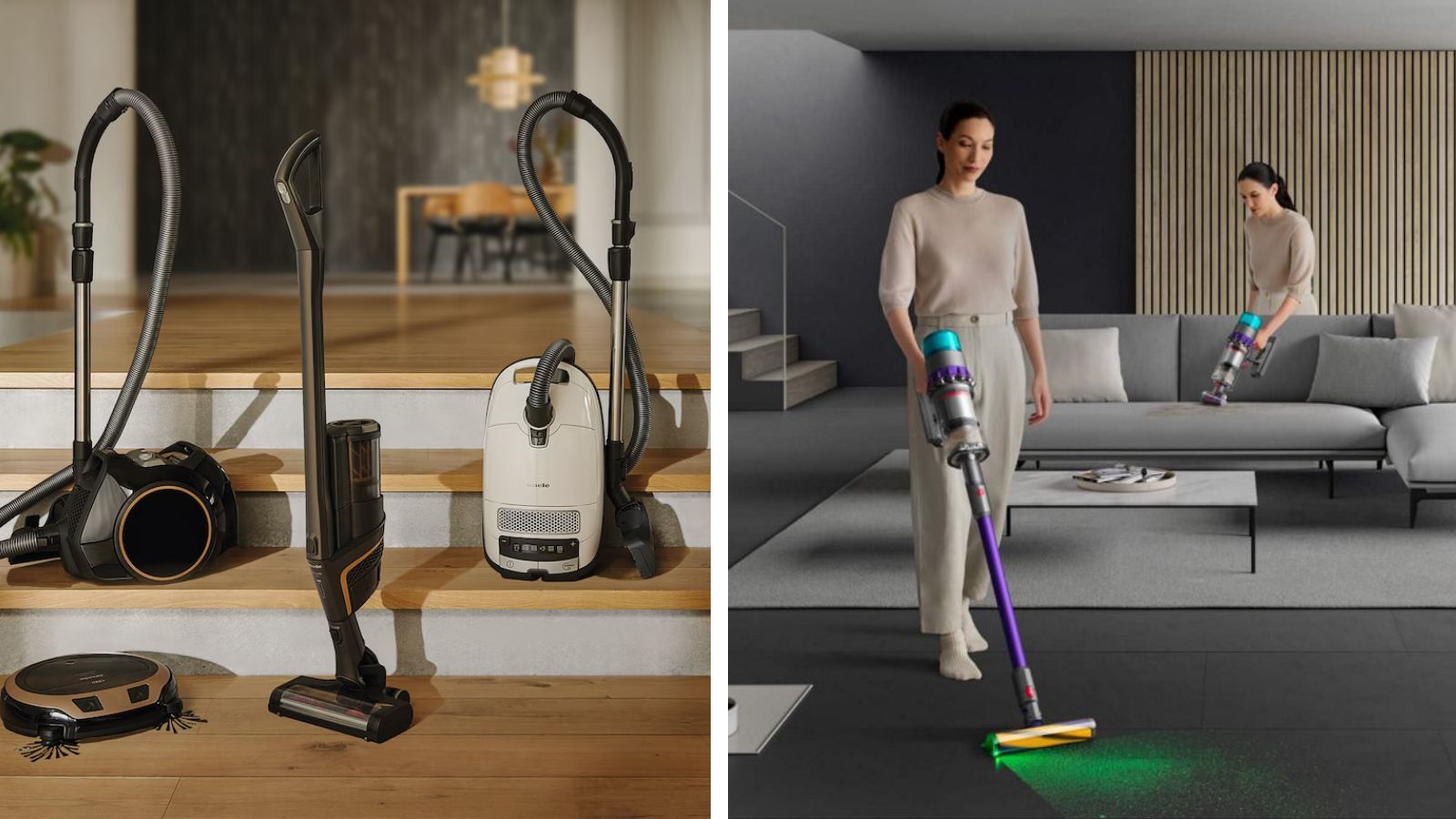
Miele and Dyson are two of the most premium, high-end vacuum brands on the market. They're also both incredibly well established – Miele was founded all the way back in 1899, and Dyson, although only going since 1991, is now a global multi-tech company that has pioneered much of the best vacuum technology we see today.
As Homes & Gardens' home tech editor, my dedicated team of product testers and I have reviewed 71 of the world's best vacuum cleaners, including 13 from Dyson and 5 from Miele. That's almost the entire Dyson lineup and most of Miele's, including all of their latest and greatest releases.
To find out which vacuum brand is right for your needs, here, I compare the two in terms of vacuum models, filtration, performance, pet hair pickup, durability and value for money. I've had extensive hands-on experience with vacuums from both brands and understand the ins and outs of their offerings.
I compared Miele vs Dyson vacuums
Miele vs Dyson: Which has the better product range?
For the most part, comparing Miele and Dyson isn't about which brand has the 'better' product range, as they each offer something distinct that they have become experts in. The best Miele vacuums are canister vacuums, with only a small selection of cordless and robot vacuums, and the best Dyson vacuums are cordless vacuums, along with one canister vacuum, one robot vacuum and two upright vacuums.
Before getting into the rest of the comparisons, this could be an easy way to pick between the two. If you're looking for a corded canister vacuum, Miele's your one. If you're looking for a cordless or upright, then Dyson has more choice.
Miele vs Dyson: Which cordless is best?

The Dyson Detect vacuums use a unique green laser to reveal invisible dust
Winner: Dyson V15 Detect
For as long as I've been testing vacuum cleaners, Dyson have topped our list of the best cordless vacuums. They're known for being in a league of their own, and our tests have confirmed just how great they are. The best vacuum cleaner we've ever tested is the Dyson Gen5detect, but I actually recommend the Dyson V15 Detect as it's $200 cheaper and, although the Gen5detect is slightly better at cleaning, they both share the same features. There isn't enough of a difference to warrant that price increase, but if you can afford it, the Gen5detect is the best you'll get.
Design expertise in your inbox – from inspiring decorating ideas and beautiful celebrity homes to practical gardening advice and shopping round-ups.
The Gen5detect and V15 Detect are part of Dyson's flagship range of vacuums, along with the smaller and lighter Dyson V12 Detect Slim. Put simply these are three of the best vacuums you'll ever use – I have a V12 and a V15 in my own home and I've never had a problem vacuuming everything in one pass, it doesn't struggle with pet hair at all, and the green laser reveals dust on the floor that I otherwise can't see.
But I recently tested Miele's best two cordless models, the Miele Triflex HX2 and the Miele Duoflex HX1, and was pleasantly surprised by how similarly they clean. The Duoflex HX1 actually gave one of the strongest cleaning performances in our tests, easily vacuuming fine powders from between the panels of wood floors which most vacuums struggle with.
The Miele Triflex HX2 is an incredible vacuum with a sleek, premium aesthetic, but it's a little too expensive considering its cons. It's heavier and less flexible than most cordless vacs, and it struggled a few times to vacuum as well as the Dysons would.
But they're priced similarly to the Dyson V15 Detect and Dyson V12 Detect Slim, and if you're spending that much money, I absolutely recommend the Dysons over the Mieles. Even though the Miele vacuums' drawbacks were only minor, there are practically no faults with the Dysons aside from how much they cost. Plus, Dyson's cordless vacuums come with particle detection and the unique green laser that improves how you clean.
More generally, Miele and Dyson both sit in the high end of the market, with their best-of-the-best cordless vacuums costing over $1,000. These are the Miele Triflex HX2 Pro and the Dyson Gen5outsize, the full package models of the Miele Triflex HX2 and Dyson Gen5detect. While these are the best performers, I don't recommend them due to the sheer price, as the improvements compared to the Miele Duoflex HX1 and the Dyson V15 Detect are minor considering the $100s more that they cost.
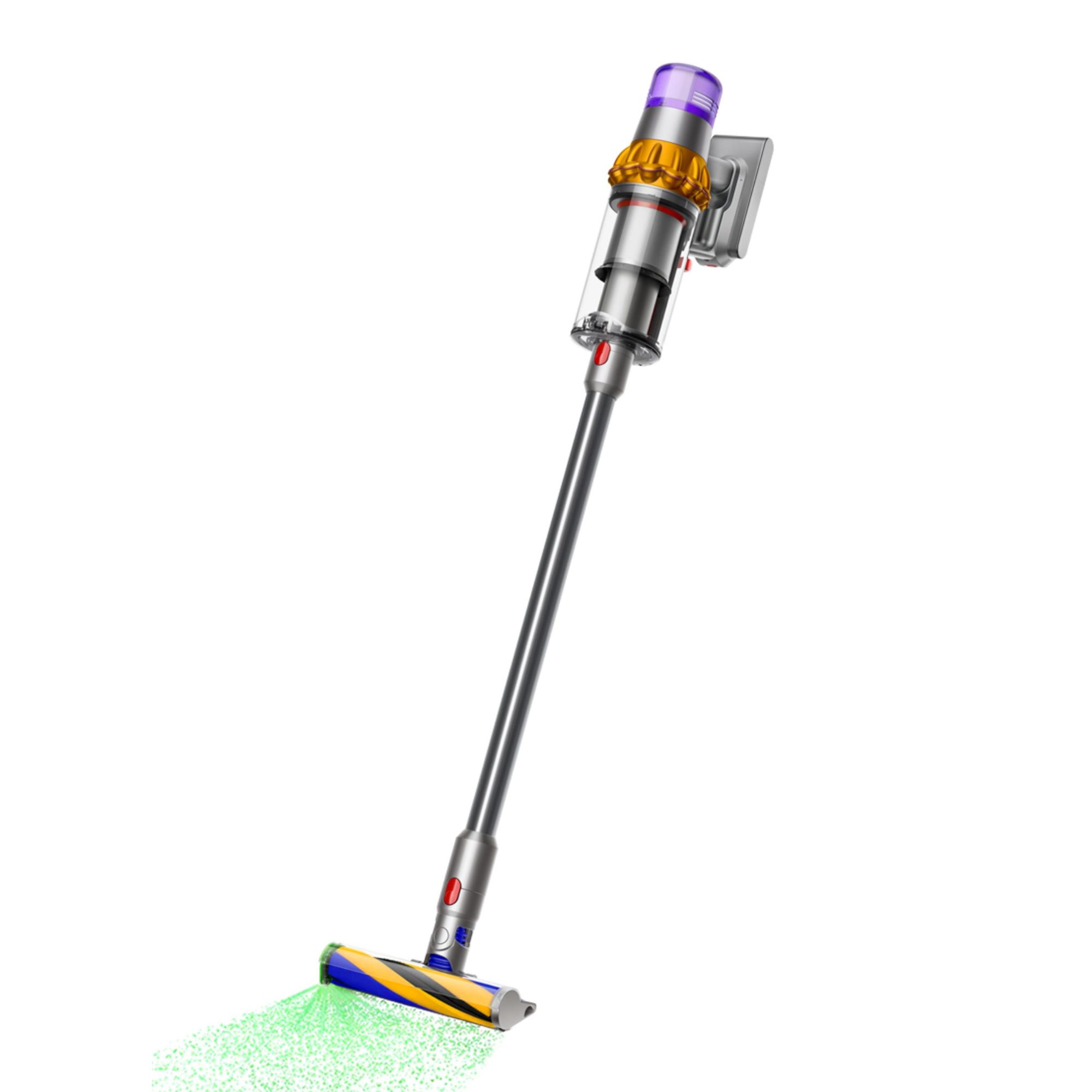
Pros
- Green Laser illuminates dust particles invisible to the naked eye
- Shows the size and number of dust particles collected in real-time
- Anti-tangle Motorbar floorhead never hair wraps
- Unparalleled suction
- Versatile attachments
Cons
- Must hold trigger for continual operation
- Expensive
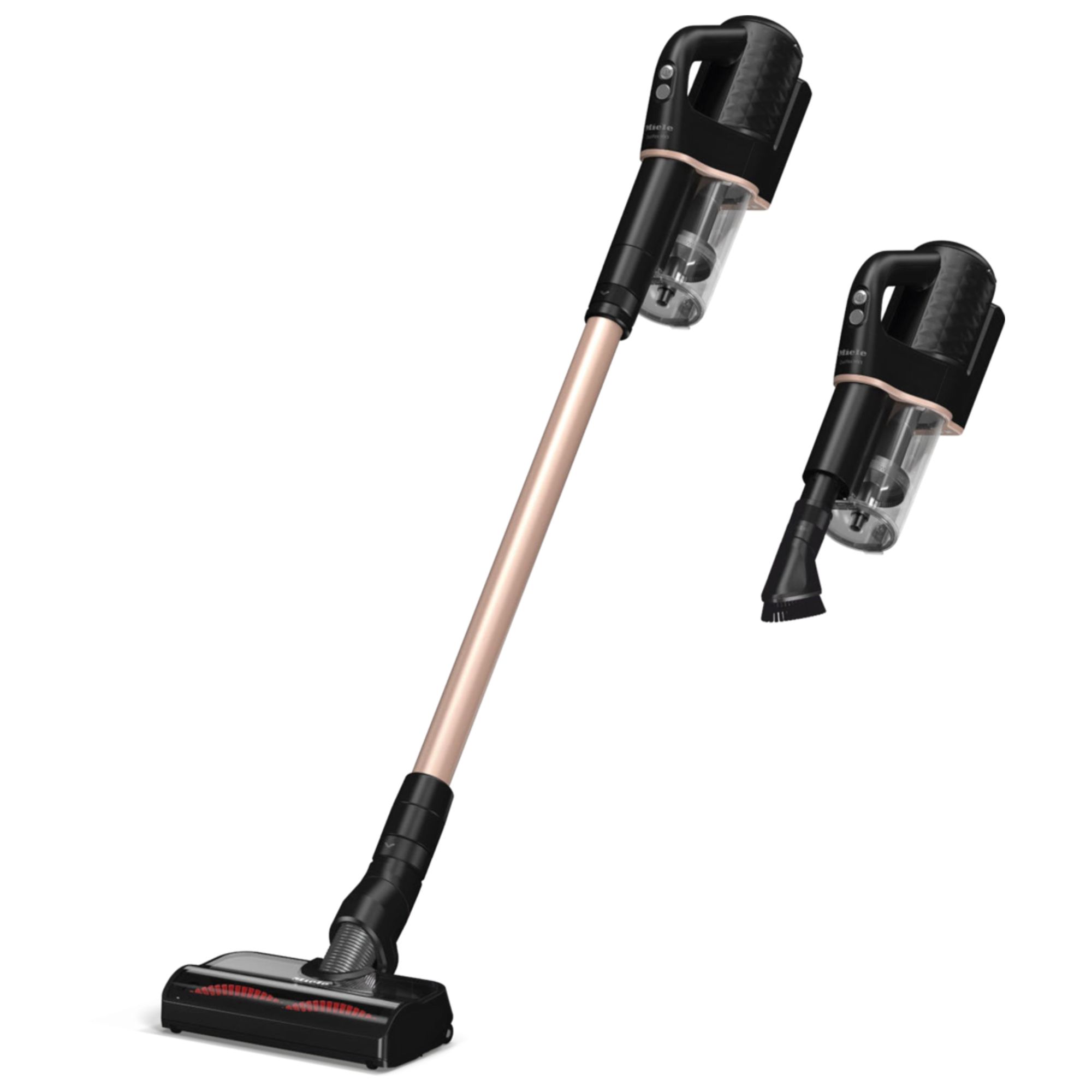
Pros
- Almost flawless vacuum performance
- Quiet
- Multi-surface floorhead
- Sleek design
- Full set of attachments
Cons
- Hair wraps around brushroll
- Struggles with larger debris on hard floors
- A bit expensive
Miele vs Dyson: Which canister vacuum is best?
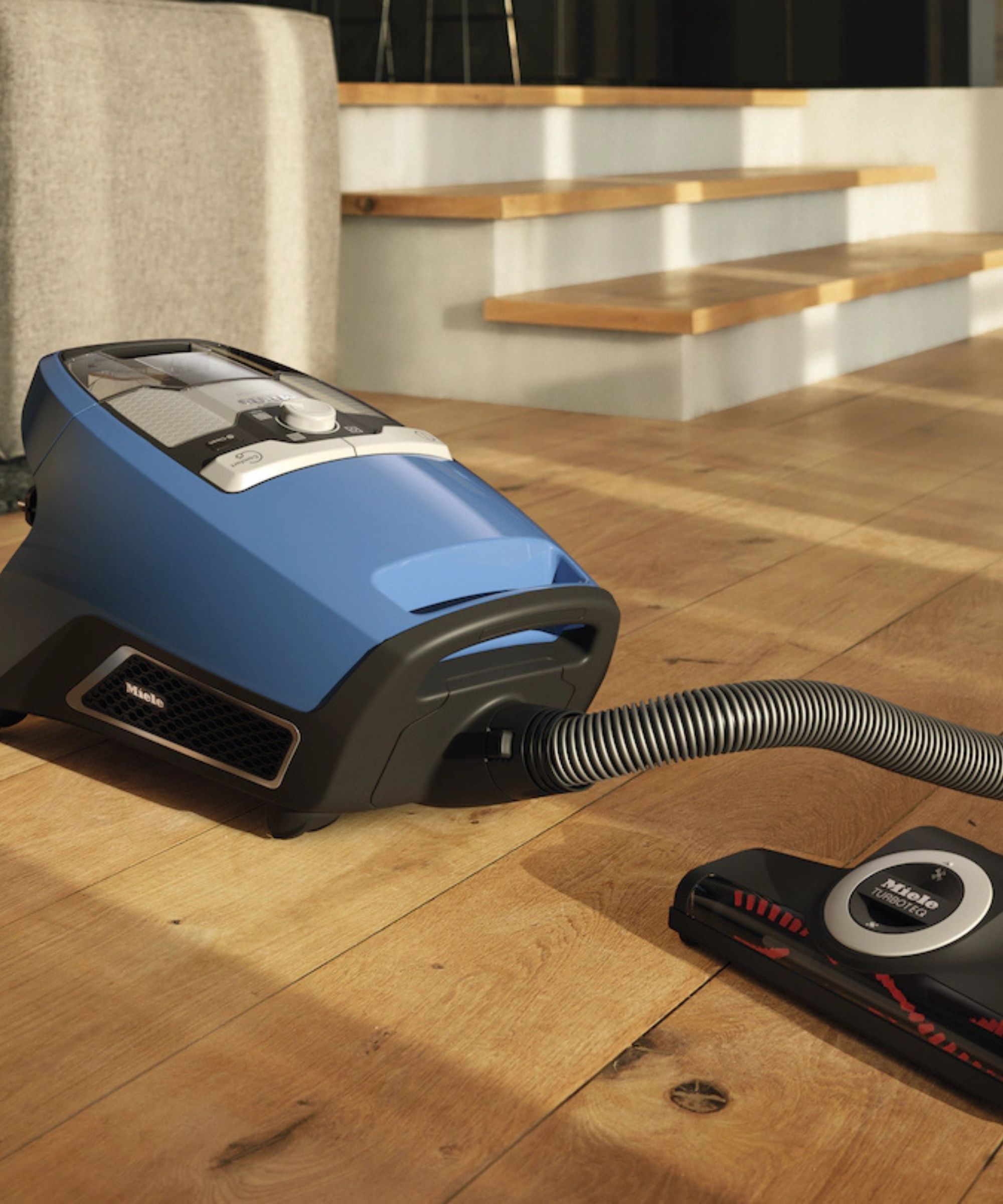
Miele's canister vacuums are among the best globally
Winner: Miele Complete C3 and Miele Blizzard CX1
We're yet to get our hands on Dyson's only canister vacuum, the Dyson Big Ball Turbinehead, but we've tested three of Miele's bests: the Miele Boost CX1, the Miele Blizzard CX1, and the Miele Complete C3.
On test, our best bagged canister vacuum is the Miele Complete C3 and our best bagless canister vacuum is the Miele Blizzard CX1. If you're after a canister vacuum, along with all the benefits you'll get from a canister vs upright vacuum, go for Miele. Not only are these vacuums tried-and-tested for decades, but there's so much more choice available.
What's great about Miele's canister range is the versatility. There are only five different models available (three bagged and two bagless), but they're packaged in so many different versions that you can easily find the right one to suit your home's needs.
For each vacuum, you can find versions designed specifically for cleaning hard floors or carpets, versions for pet owners, or the full package that has every vacuum attachment you could possibly need.
I'll update this page once we've reviewed the Dyson Big Ball Turbinehead, but in the meantime, it's worth noting that this Dyson canister vac (and almost any other Dyson vacuum) uses whole-machine filtration whereas Miele's do not.
The Dyson Big Ball Turbinehead is also just $350, which can only be said for Miele's most basic model the Miele Classic C1. All others cost anywhere between $400 and $1,700.
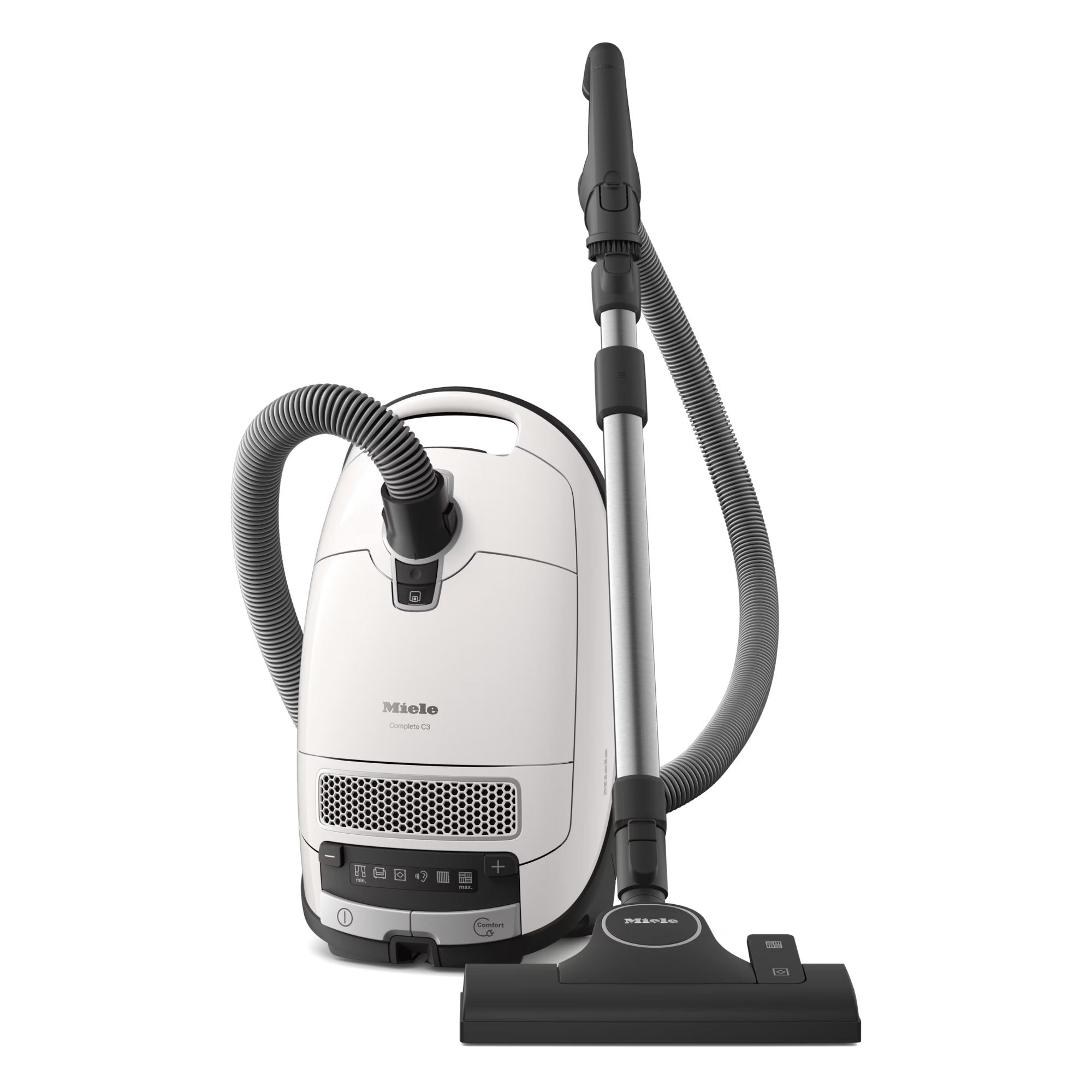
Pros
- Great for pet hair on all surface
- Great for dust on all surfaces
- Good onboard storage
- Long power cord
- HEPA filters
Cons
- Poor with large debris
- Expensive
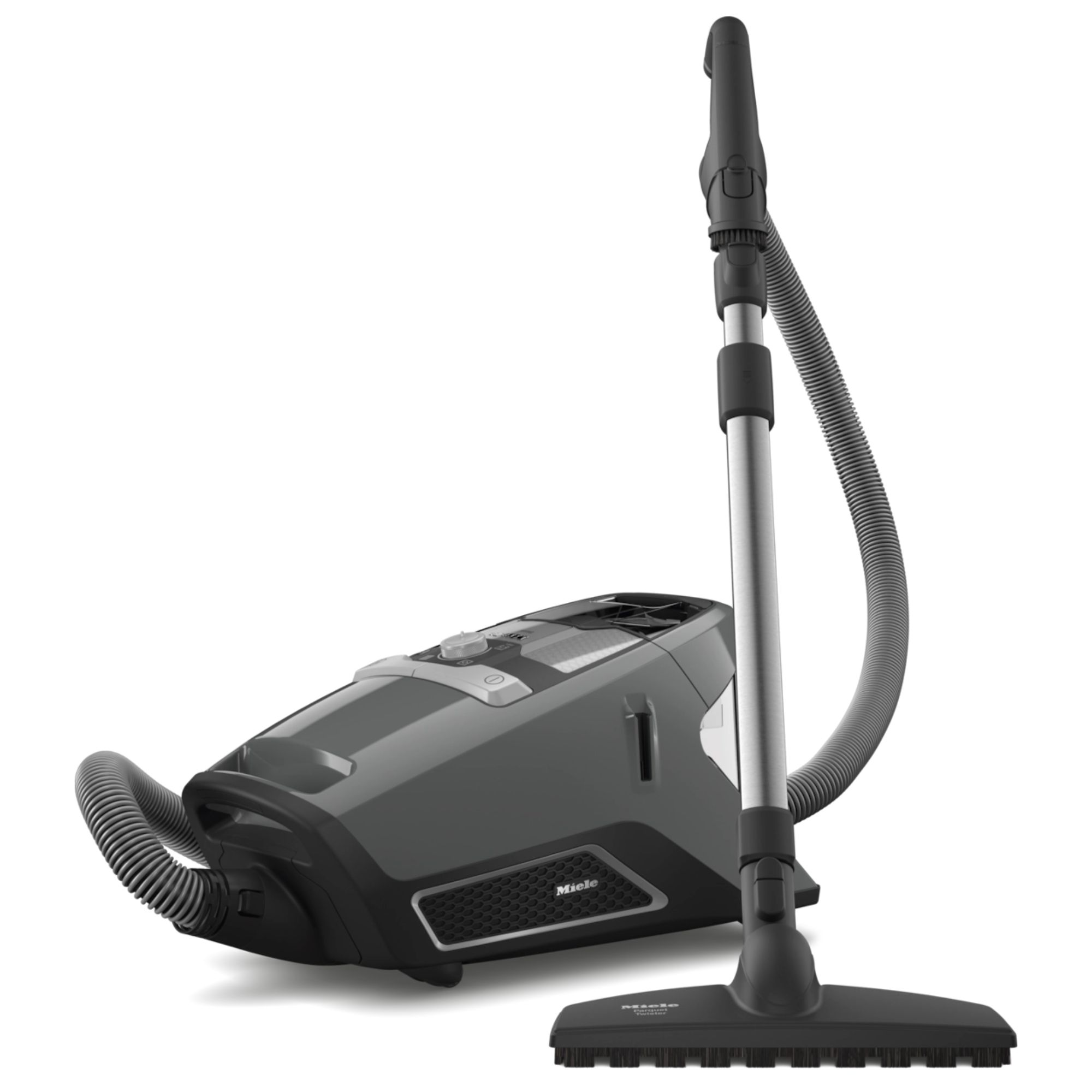
Pros
- Flawless performance on pet hair
- TurboTeQ floorhead works like a dream
- Some of the highest suction I've ever seen in a vacuum
- Attractive design
- Attachments store neatly within the vacuum
Cons
- Heavy handle
- One of the floorheads has poor cleaning performance
- Expensive
Miele vs Dyson: Which is better on pet hair?
Winner: Dyson V15 Detect, closely followed by Miele Blizzard CX1 Cat & Dog
The Dyson V15 Detect and most cordless Dyson vacuums come with a specialized floorhead called the Motorbar. It's a multi-surface floorhead but it works exceptionally well on carpets, and has incredible anti-tangle veins that are able to pull pet hair out of the most stubborn floors.
The best vacuum for pet hair that we've tested is the Dyson V15 Detect. This is partly thanks to the Motorbar floorhead but also thanks to the vacuum's incredible suction power. And actually, this pet hair performance is similar across many of Dyson's vacuums, so you could even opt for a more affordable model like the Dyson V12 Detect Slim and still stay on top of fur at home.
I've visited the Dyson labs in Malmesbury, UK, and saw the mounds and mounds of donated fur that Dyson use to test their vacuums with, so it's no surprise that they've figured out exactly what's necessary to vacuum pet hair the right way.
But although they're not quite up to Dyson's standards, Miele's canister vacs are still exceptional at dealing with pet hair. Almost all of their vacuums are available in a 'Cat & Dog' package that includes specialized cleaning tools for digging hair out of every surface.
I've tested a Cat & Dog model myself (the Miele Blizzard CX1 Cat & Dog) and found that the TurboTeQ floorhead that's included is an absolute powerhouse when picking up pet hair, even from carpets. I tested it in a local pet shelter and it pulled fur out of a high-friction floor mat better than almost all others I've tested.
The downside to Miele's Cat & Dog models however is the cost. Prices vary, but typically you're looking at spending at least $1,000. The Miele Complete C3 Cat & Dog, which we've tested and loved its performance on pet hair, costs more than $1,200 at full price.
The Dyson V15 Detect however is only $750 at full price, often discounted to around $450-650.
Miele vs Dyson: Which has the better filtration?
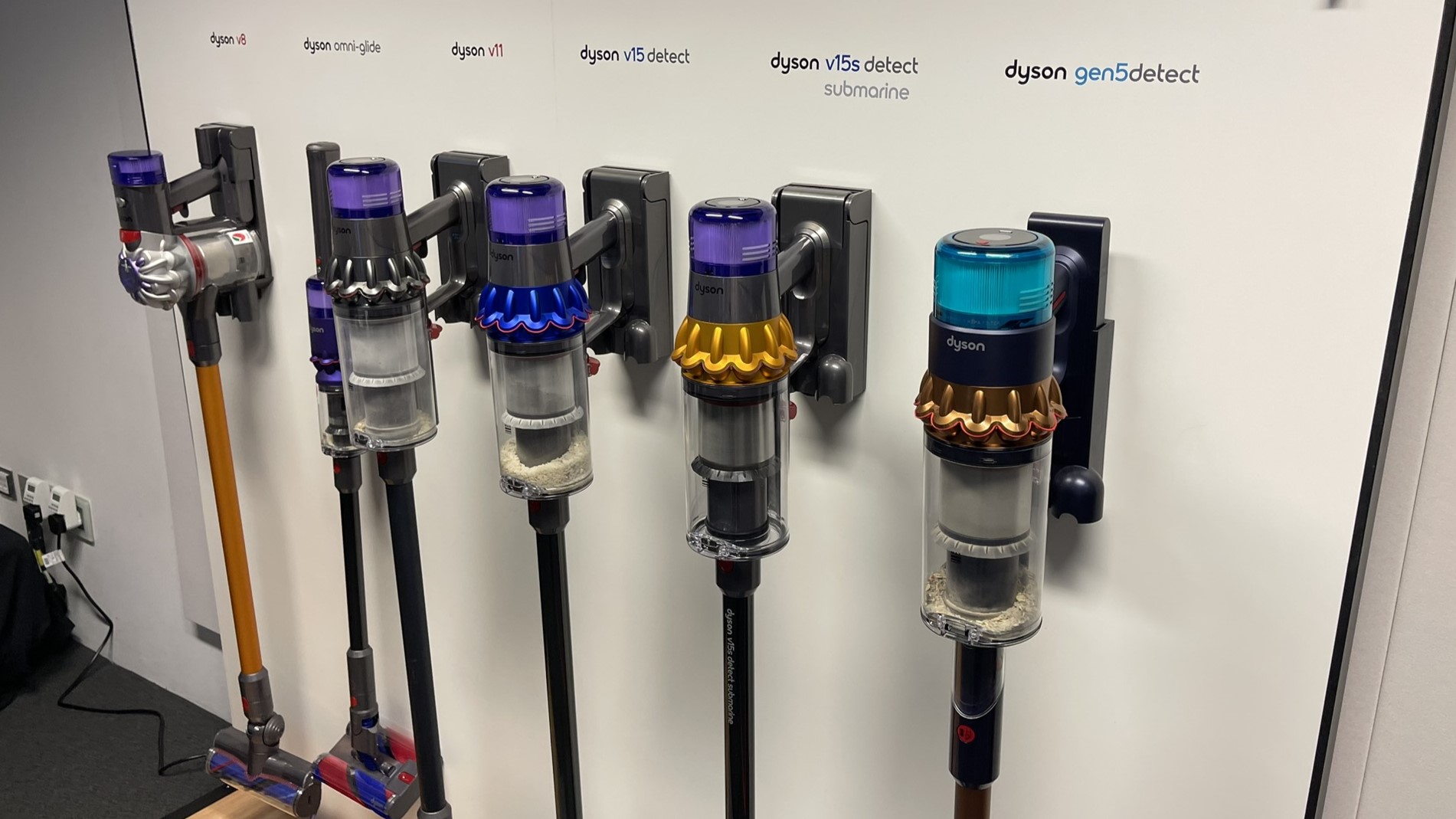
Dyson's vacuums use whole-machine HEPA filtration
Winner: Dyson, followed by Miele's vacuum bags
Generally, Dyson vacuums have tighter filtration. They use whole-machine HEPA filtration with layers throughout the appliance to trap particles at different stages.
Miele doesn't use whole-machine filtration in their vacuums, and many of their filters aren't even HEPA-certified. A HEPA filter is essential for allergy sufferers as it must meet official standards certifying that it capture 99.97% of particles as small as 0.3 microns, which covers many of the pollutants that trigger allergies like dust, pollen and dander.
HEPA filters are available in every Miele vacuum but they aren't included with every vacuum. They must either be bought separately or included as part of one of the more expensive packages.
But Miele's bagged canister vacuums provide extra filtration. The vacuums still use filters (that are occasionally HEPA), then the bags themselves act as another filter, trapping everything inside and being disposed of when full without you having to come into contact with what's inside.
Miele vs Dyson: Which vacuums are more durable?
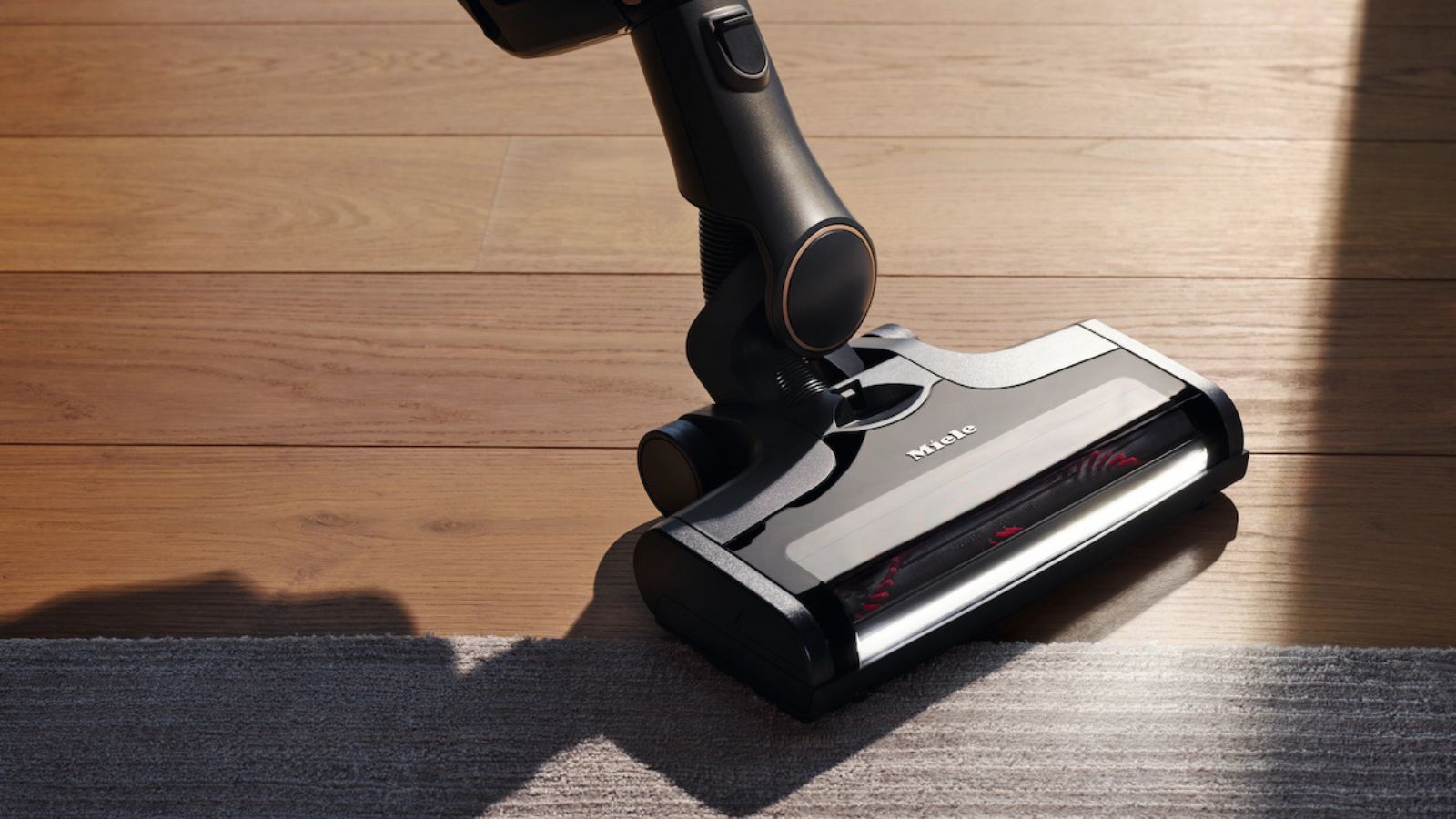
Miele's vacuums are widely praised for their durability
Winner: Miele
This is perhaps Miele's biggest win. Miele appliances are famously known for their durability, and people have used their vacuums for longer than 10 years at a time with just a little maintenance and regular vacuum cleaning to keep it working. Stumble upon any online vacuum forum and you'll see users discussing the decade(s) that they've owned a Miele vacuum for and how well it still performs.
Our Head of Solved Punteha van Terheyden can attest to this, owning two separate Miele vacuums for eight years and four years respectively, without an issue ever arising in either.
Dyson vacuums are also known to last for years, but not to the same extent as Miele. Plus, cordless vacuums are generally less durable because of all the interchanging parts.
Miele vs Dyson: Which vacuums are better value?
Winner: Dyson
I never thought I'd say that the famously expensive Dyson vacuums offer better value-for-money than another brand. But compared with Miele, with vacuums costing upwards of $1,700, Dyson is the winner here.
Put simply, the Dyson Gen5detect is the best vacuum we've ever tested (better than any Miele vacuum), and it costs $950 at full price. Miele's best vacuums cost that much as a bare minimum.
A counter-argument is to consider how long you'll likely own a Miele vacuum for. You might have to replace a Dyson vacuum within 5-10 years, but a Miele will far outlive that, meaning it'll be a long time until you have to spend on the next one.
I also appreciate that Miele's most expensive vacuums are well-suited to professional cleaners who vacuum large, busy and messy areas on a frequent basis, and need something rugged to keep up with it. But this level of durability isn't required for the average consumer and homeowner, who would be better off investing in a Dyson vacuum that can clean common home messes flawlessly (and take up less space when not in use).
Still looking too expensive? Consider one of the best Dyson alternatives for similar cleaning power for a fraction of the cost.

Dan is the Home Tech Editor for Homes & Gardens, covering all things cleaning, sound, smart home, and air treatment across the Solved section.
Having worked for Future PLC since July 2023, Dan was previously the Features Editor for Top Ten Reviews and looked after the wide variety of home and outdoor content across the site, but their writing about homes, gardens, tech and products started back in 2021 on brands like BBC Science Focus, YourHomeStyle and Gardens Illustrated.
They have spent more than 400 hours testing and reviewing vacuums, soundbars and air purifiers for Homes & Gardens.
Dan has a BA in Philosophy and an MA in Magazine Journalism. Outside of work, you'll find them at gigs and art galleries, cycling somewhere scenic, or cooking up something good in the kitchen.
